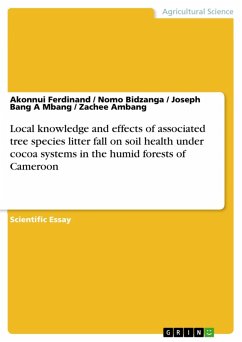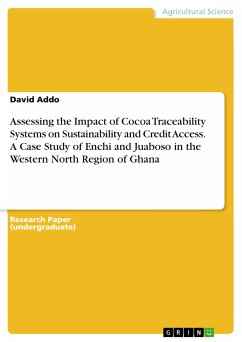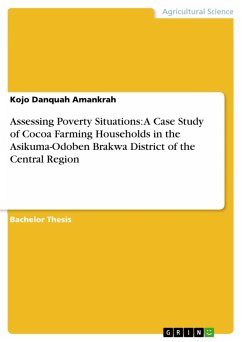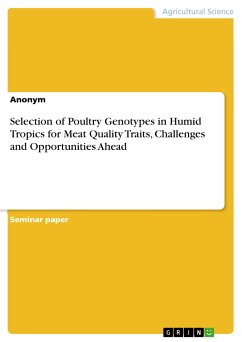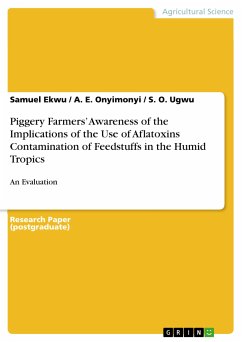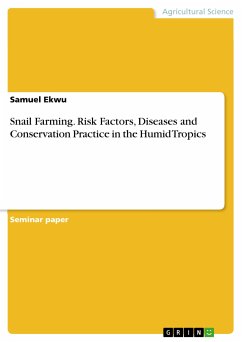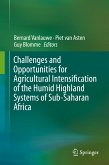Scientific Essay from the year 2018 in the subject Agrarian Studies, grade: 5.25, University of Yaoundé I, language: English, abstract: Investigations were conducted to assess farmers' perceptions of the effects of associated tree species on soil fertility status under cocoa-based systems in the Evodoula district one of the oldest cocoa producing basin of southern Cameroon characterized by a high population density and land use intensity. Farmers were asked to rank, based on their knowledge of the fertilizing patterns of associated species, ten trees species with the most positive effects on soil fertility. The ranking was tested with respect to the amount of litter fall and the quantity of minerals released (N, P, K, Ca and Mg) as factors affecting the nutrient recycling process. In decreasing order of importance, the top ten species identified were Milicia excelsa, Alstonia boonei, Terminalia superba, Irvingia gabonensis, Ceiba pentandra, Ficus mucoso, Musanga cecropoides, Coula edulis, Eribroma oblungum and Zanthoxylum heitzi. The mean litter fall ranged from 19.03 to 0.52 kg/ha and N was the main nutrient in the leaf litter of the different tree species with its concentration varying from 29.81 to 53.56 g/kg and a mean of 42.31 g/kg. P was present in very low concentrations (from 0.4 to 1.96 g/kg) while K varied widely from 0.76 to 6.82 g/kg. Mg was quantitatively the second element in the leaf litter, with values ranging from 8.84 to 37.29 g/kg. A strong correlation (P < ...) was found to exist between the farmers' ranking and the chemical composition of the litter , promoting thereby the assertion that the integration of farmers' knowledge in global science could contribute in improving the understanding of the phenomenon as well as the adoption rate amongst end users.
Dieser Download kann aus rechtlichen Gründen nur mit Rechnungsadresse in A, B, BG, CY, CZ, D, DK, EW, E, FIN, F, GR, HR, H, IRL, I, LT, L, LR, M, NL, PL, P, R, S, SLO, SK ausgeliefert werden.

